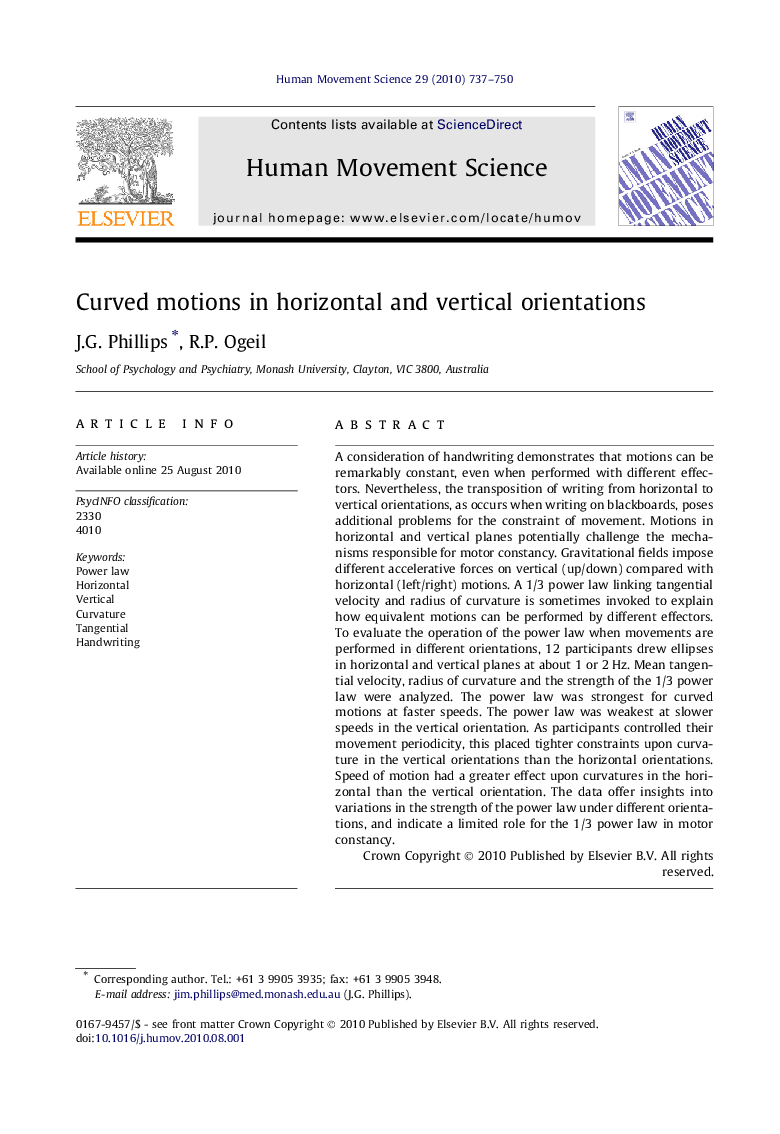| Article ID | Journal | Published Year | Pages | File Type |
|---|---|---|---|---|
| 928710 | Human Movement Science | 2010 | 14 Pages |
A consideration of handwriting demonstrates that motions can be remarkably constant, even when performed with different effectors. Nevertheless, the transposition of writing from horizontal to vertical orientations, as occurs when writing on blackboards, poses additional problems for the constraint of movement. Motions in horizontal and vertical planes potentially challenge the mechanisms responsible for motor constancy. Gravitational fields impose different accelerative forces on vertical (up/down) compared with horizontal (left/right) motions. A 1/3 power law linking tangential velocity and radius of curvature is sometimes invoked to explain how equivalent motions can be performed by different effectors. To evaluate the operation of the power law when movements are performed in different orientations, 12 participants drew ellipses in horizontal and vertical planes at about 1 or 2 Hz. Mean tangential velocity, radius of curvature and the strength of the 1/3 power law were analyzed. The power law was strongest for curved motions at faster speeds. The power law was weakest at slower speeds in the vertical orientation. As participants controlled their movement periodicity, this placed tighter constraints upon curvature in the vertical orientations than the horizontal orientations. Speed of motion had a greater effect upon curvatures in the horizontal than the vertical orientation. The data offer insights into variations in the strength of the power law under different orientations, and indicate a limited role for the 1/3 power law in motor constancy.
